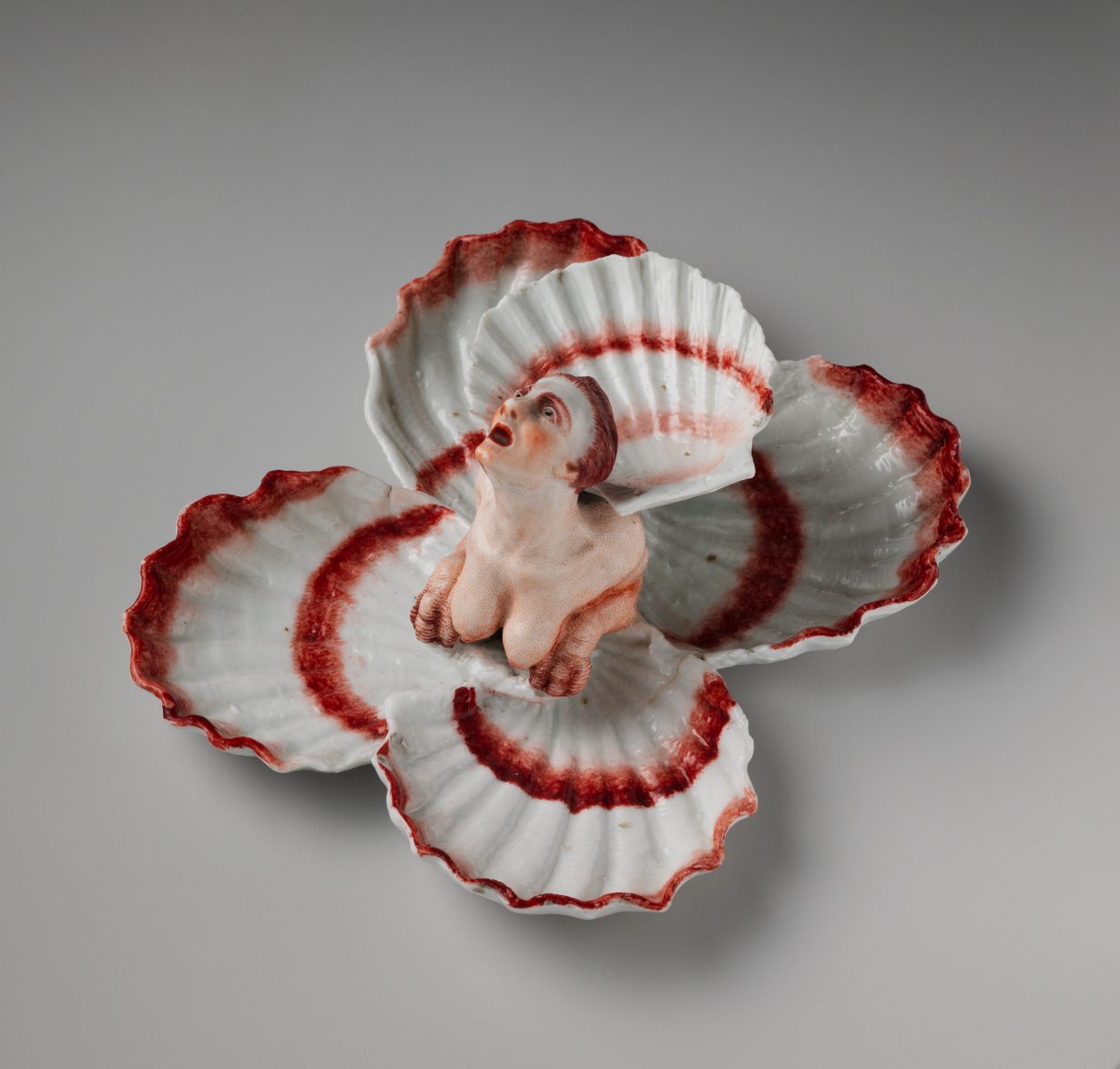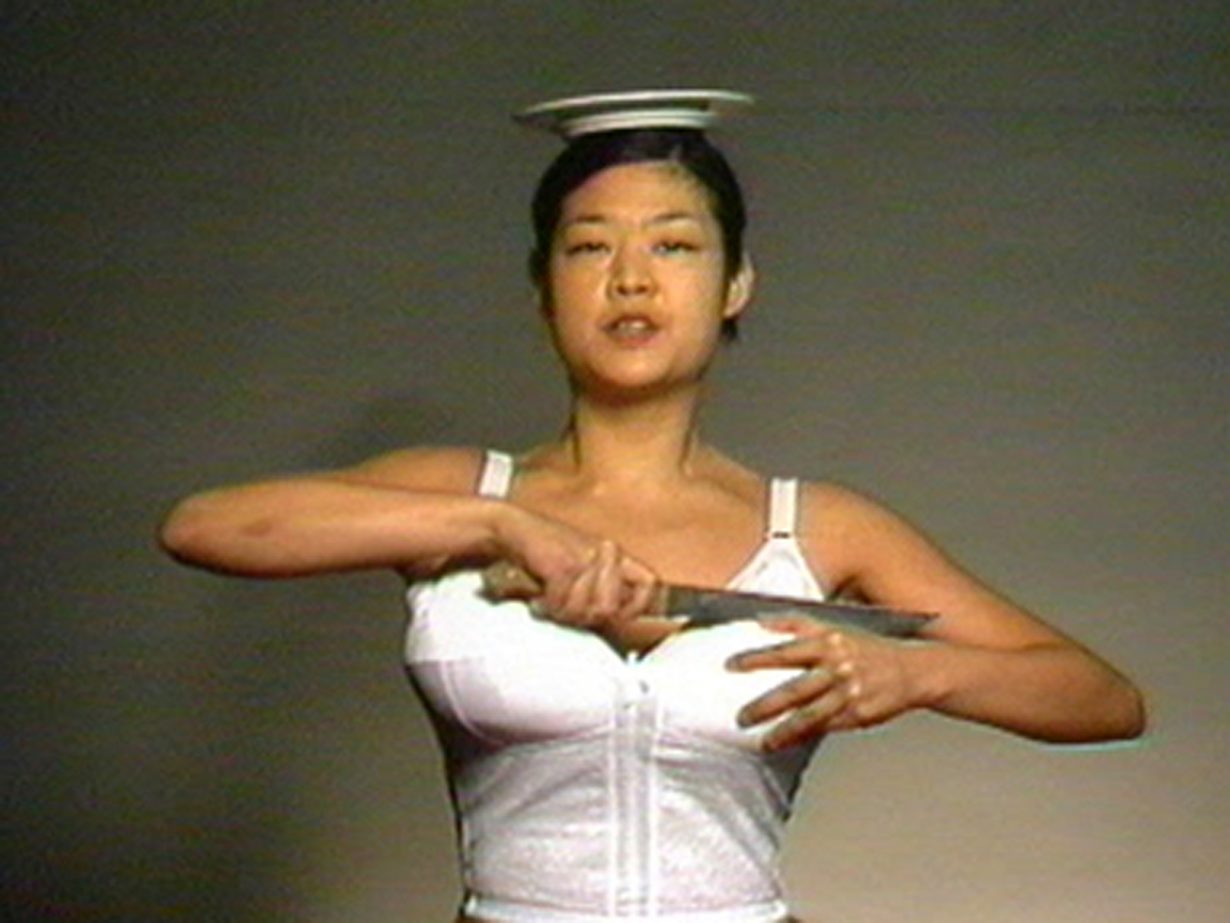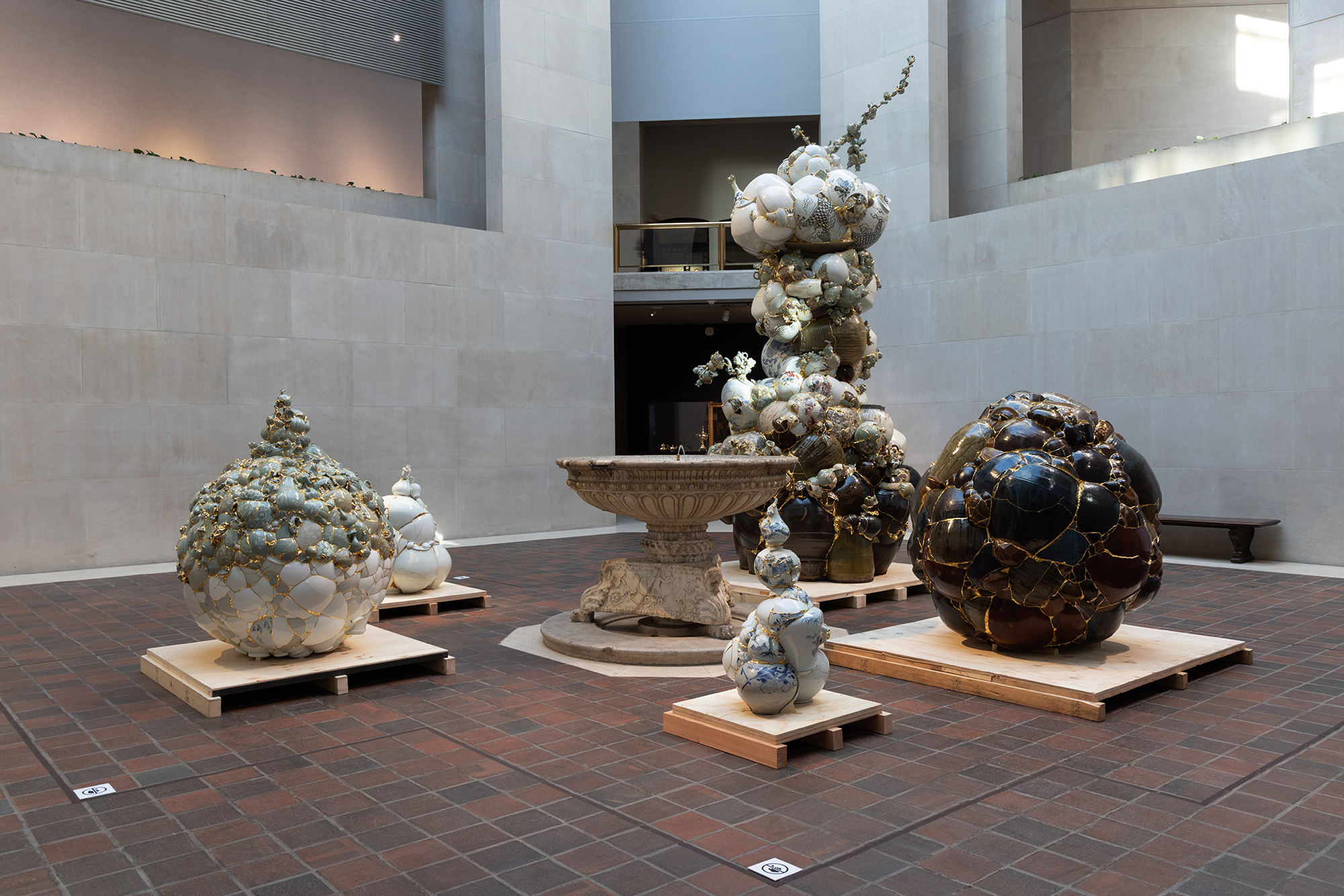Monstrous Beauty at the Met proposes a link between Europeans’ attitudes towards Chinoiserie and their fetishisation of the East Asian female body
In the Met’s atrium are five sculptures from Yeesookyung’s Translated Vase series (2002–). These bulbous, creaturely forms are made from broken pieces of Korean ceramics glued together with epoxy resin and gilded at the seams. Most of the pear-shaped sculptures top out somewhere between one and two metres, though one, five metres high, towers over visitors’ heads. Viewers unfamiliar with the look and history of Korean ceramics may say that Yeesookyung’s sculptures appear – to borrow the tagline of contemporary artist-and-fashion collective CFGNY – ‘vaguely Asian’, and that is precisely the point. On their blue-and-white and earth-toned surfaces are dragons, clouds and calligraphy, hallmarks of a style of decoration known in the West as Chinoiserie.
The wall texts in Monstrous Beauty, a 200-work exhibition in the galleries around Yeesookyung’s sculptures, frame Chinoiserie, which originated in early modern Europe as a result of trade with China, as a Western projection of Orientalist ‘fantasy’ rooted in Europeans’ fascination with – and fear of – ‘grotesques’ (manticores, mermaids and so on). Moreover, the exhibition proposes a link between Europeans’ attitudes towards Chinoiserie and their fascination with the East Asian female body as a fetishised foreign object. The double-edged nature of this fascination is crucial to the curatorial framework, since most of the exhibition’s rhetorical operations rest on the ability of the word ‘monstrous’ to carry a negative or positive charge depending on context. Porcelain, for instance, while prized by early Western procurers for its whiteness and semitranslucency, was simultaneously regarded as ‘monstrous’ and ‘strange’ and therefore suspect.

While, according to the catalogue, scholar Anne Anlin Cheng’s theory of East Asian feminism was foundational to the curating of Monstrous Beauty (Cheng’s influential 2018 book, Ornamentalism, traces how figures like Hollywood star Anna May Wong turned fetishisation and objectification to their advantage), in the galleries the show’s engagement with feminism is most apparent at the level of representation. Aside from a notable section devoted to the English queen Mary II (1662–94), whose porcelain collection helped popularise Chinoiserie in Europe, the exhibition focuses heavily on images of Asian women painted and sculpted on porcelain commodities and disseminated in Western media. Paintings of willowy meiren, or ‘beauties’, for instance, appear on the surfaces of eighteenth-century Chinese export ceramics and their British, French and German imitations. On an enamelled and gilded hard-paste porcelain inkstand (c. 1750–70) pulled from the Met’s collection, we see meiren reading and writing in richly furnished rooms. The catalogue informs us that sculptures of European figures made contemporaneously were imbued with allegorical significance, but that depictions of Asian women on palm-size porcelains were presumed to possess ‘no philosophical meaning’.
The show tries to combat this and other pejorative historical attitudes by deploying a variety of critical and sometimes humorous interventions by contemporary Asian and Asian American women artists. In Jen Liu’s single-channel video The Land at the Bottom of the Sea (2023), an East Asian salarywoman, who is swimming in the ocean, encounters a band of mermaids who appear to flirt with her before dismembering her, while a feminine speaker delivers an absurd sales pitch in voiceover. “Let us take your supply chain to the next level,” she says in English, before describing the steps we should take to live “a resistance-free life as optimised particles of light”. Besides such exceptions, most of the contemporary rejoinders in the exhibition come across as awkward attempts to inject life into the air between the vitrines using sounds and traces from actual Asian, female bodies. Patty Chang’s voice projects into one of the galleries via her single-channel video Melons (At a Loss) (1998), in which the artist cuts and eats a cantaloupe inside her bra while delivering a monologue about a commemorative saucer she received when her aunt died. Jennifer Ling Datchuk’s hair issues from two wall-mounted porcelain plaques in her diptych Pretty Sister, Ugly Sister (2014).

Towards the end of the nineteenth century, particularly in the US (which was by then a colonial force), fashion, film and photography provided new channels for the spread of Chinoiserie. As the show turns to consider these other mediums, notions of Chinoiserie and monstrousness grow increasingly unwieldy and diffuse. The historical equivalence between fetishised exotica and Asian female bodies is meanwhile increasingly and predictably emphasised. Objects associated with a roster of real Asian women who were fetishised in the name of Western profit, domination and desire are rolled out as proof that history’s biggest ‘monsters’ are sexism, racism and mercantile ‘greed’. These include the evening dress Anna May Wong wore in the film Limehouse Blues (1934), a black silk number embellished with gold sequins arranged in the shape of a Chinese dragon; a gelatin silver print of the Qing dynasty empress dowager Cixi (1835–1908) and a metal fingernail covering of the sort with which she accessorised, which, according to the catalogue, the Western press portrayed as a ‘talon’ in order to demonise her; a photograph of a Chinese woman exposing one of her bound feet and Lacquer box and shoes for bound feet (c. 1852), a box containing pint-size silk slippers that had been sold, the catalogue tells us, as a souvenir to an American named C. E. Barker; and even a ‘massage table’ made to memorialise the victims of the 2021 Atlanta spa shooting, when a white gunman in the state of Georgia murdered eight people in massage parlours, six of whom were Asian women (his excuse: sex addiction).
Indeed, spotlit in the final gallery, a sculpture by Patty Chang titled Abyssal (2025) recalls this sordid episode. A slab of off-white porcelain, bored through in odd places with a handful of smooth round holes, rests on sterile metal legs. This bleak, inhospitable and enigmatically porous ‘table’ brings the exhibition full circle, back to a kind of ceramics one might justifiably call ‘monstrous’ and ‘strange’. In the absence of much positive imagery, the exhibition leaves one with a list of violences and wounds. In looking for the common thread between foot binding and painted ceramic shards, one ends up circling ad nauseum around the convenient symbol of the broken (Asian, female) body. Given that, as the exhibition seems to suggest, Asian women might have merely transformed over a few hundred years from meiren on inkpots into victims of gender-based gun crimes, it’s hard to remember that what the show set out to examine was an undertheorised stylistic phenomenon – and what viewers might have expected to encounter, even if only for the sake of critiquing it, was beauty.
Monstrous Beauty: A Feminist Revision of Chinoiserie at The Metropolitan Museum of Art, New York, through 17 August
From the Summer 2025 issue of ArtReview – get your copy.
